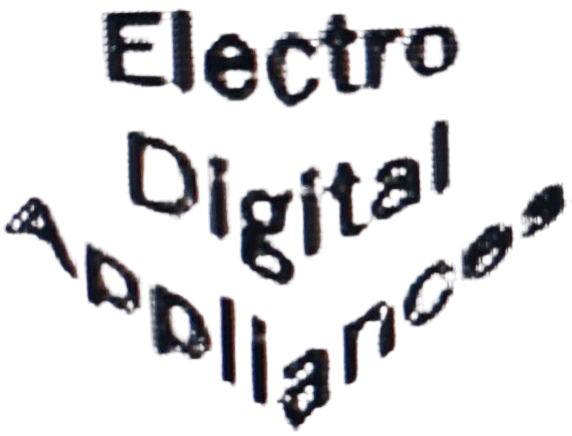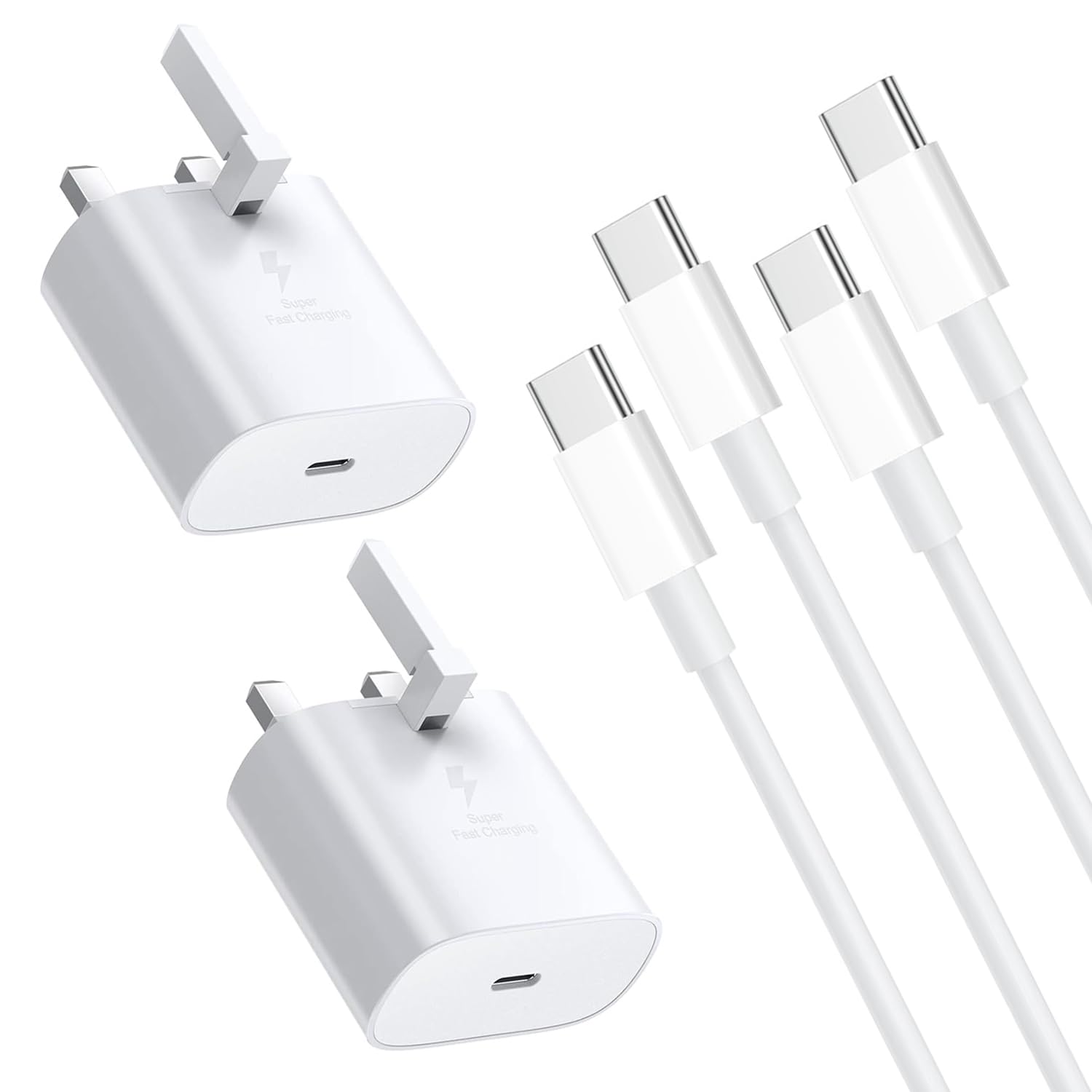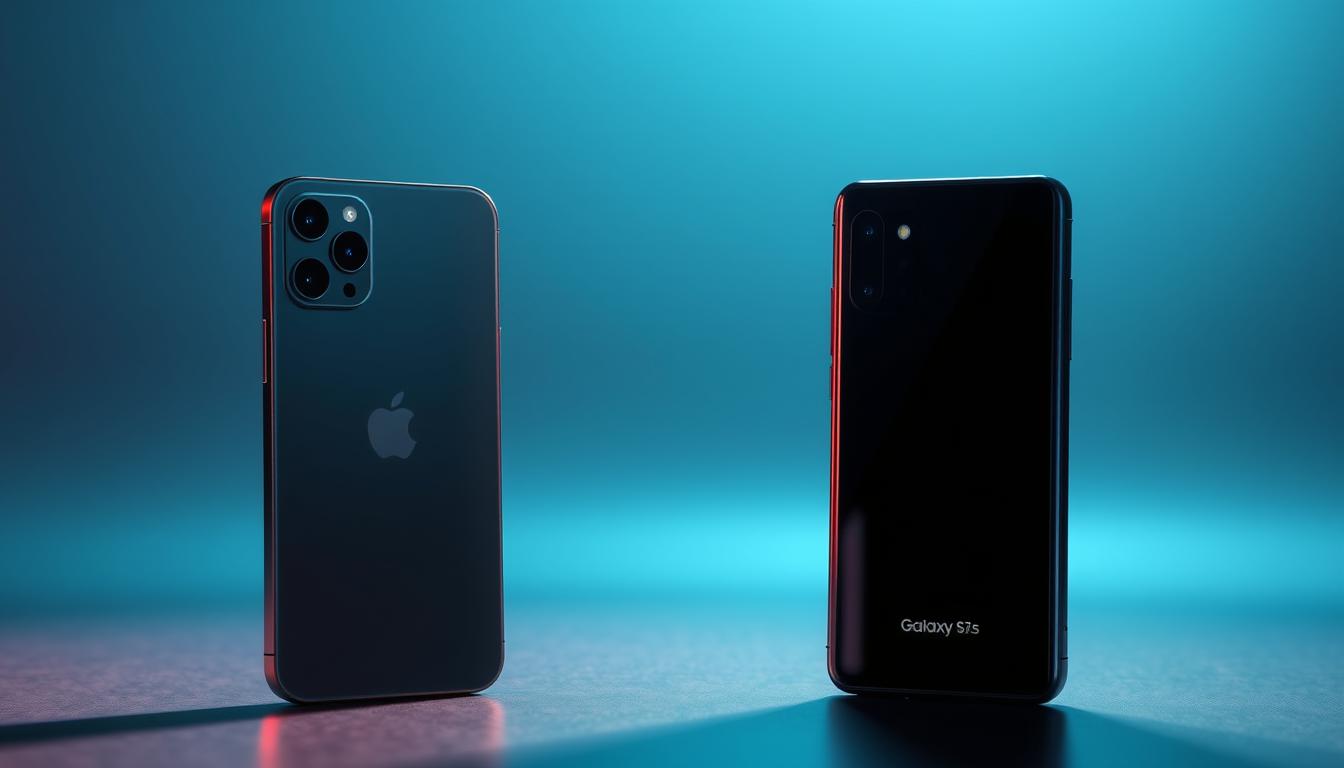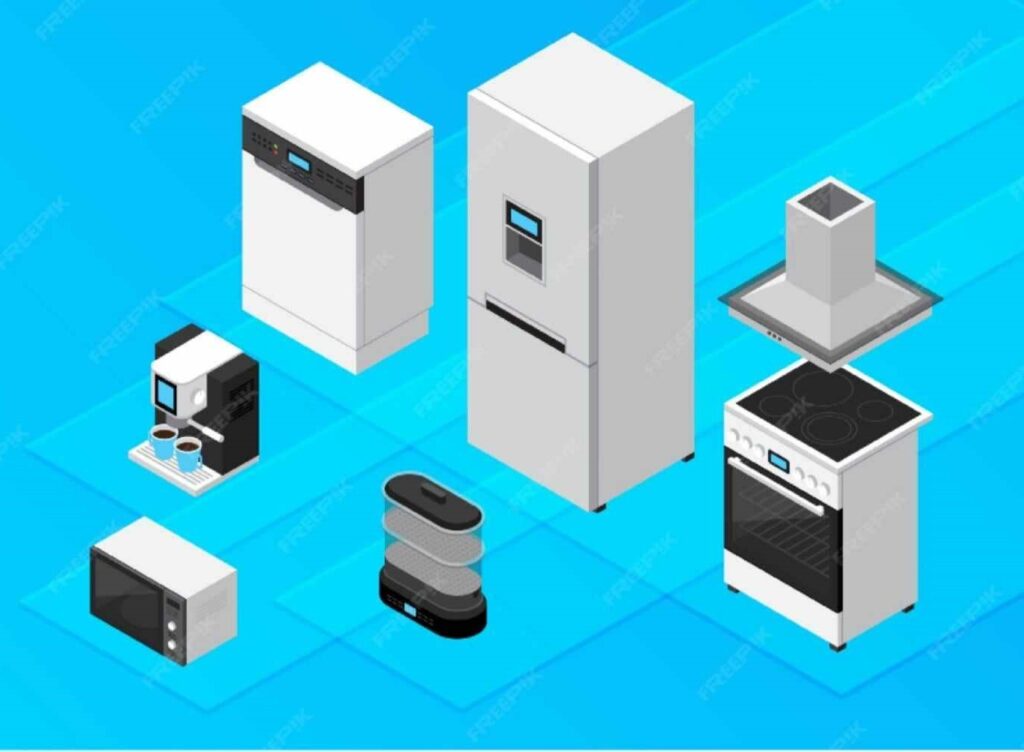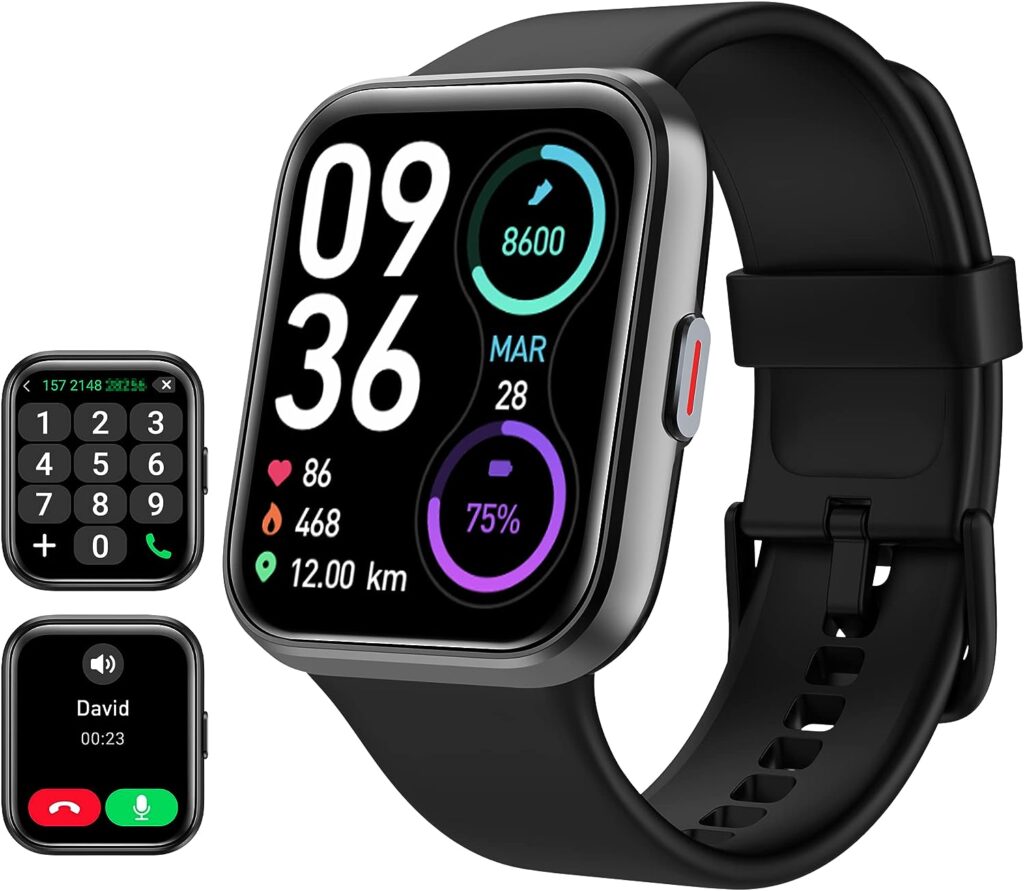Air Fryer 5.7L, JOYAMI Air Fryer

About this item
- SEE YOUR FOOD COOK – ClearCook window and internal light let you watch your food cook to perfection without opening the basket.
- HEALTHY & DELICIOUS – With 360° rapid heat circulation technology and 1700W high heating power, our air fryer cooks your food with less fat and more flavor.
- EASY COOKING – 8 preset programs for French fries, bacon, chicken thighs, shrimp, steak, cake, dehydration, and fish make cooking a breeze.
- SIMPLE CONTROLS – OLED touch control panel lets you easily select modes, set timer, and more with just a few taps.
- SAFE & CONVENIENT – Auto-off safety feature ensures your safety by powering off the fryer when you remove the basket, and resumes frying when you put it back.
Electro Digital Appliances
Your Gateway to Smart Shopping

Apple Watch Series 9 is the best smartwatch overall, offering top-tier performance, seamless integration with iPhones, and advanced health tracking features. For those seeking durability and extra features,Read More
Samsung Galaxy S24 Ultra is considered the best Samsung phone of 2024. It offers exceptional performance with its overclocked Snapdragon 8 Gen 3 chipset, a stunning 6.8-Read More

Samsung
55 Inch S90C 4K OLED HDR Smart TV
About this item
Samsung OLED Technology – Samsung OLED TVs with Quantum Dot combine the pure blacks and limitless contrast from OLED TV technology with the true-to-life colours from Quantum Dots. Pair picture-perfect blacks with naturally bright colour.
Ultra Viewing Angle With Anti-Reflection Screen – Unlike other OLED TVs, this Samsung OLED TV has a super slim and wide panel with anti-reflection technology built in for a an ultra slim TV that looks great from all angles with no glaeRead More
Dolby Atmos Audio & Object Tracking Sound LITE – For audio that immerses you and puts you in the heart of the action, our Samsung OLED TV has Dolby Atmos audio and Object Tracking Sound LITE for a Samsung Smart TV that looks and sounds amazing.
Smart TV Streaming & Built-In Gaming Hub Too – Access all your favourite streaming apps at the touch of a button but also game too! Our Samsung OLED TV has a built in gaming hub for console free gaming with just a controller connection.
Start Experiencing Samsung TVs – We believe a TV is more than something you watch. It should inspire, amaze, envelop and immerse you. From quality picture, to elegant design, our TVs push the boundaries of what is possible and what a TV can be.
discover and Browse variety of Amazon games

Beat That! Game – Party Games & Family Games, Games for Adults & Family Board Games for Kids and Adults – Garden Games – Family Card Games – Main Game & Household Objects Expansion Bundle
For More information
Check price

It’s Bananas! The Monkey Tail Game – Funny, Fun Party & Family Game for Kids, Baby Shower, Hen Do, Easter, Gag Gift for Game Night, Ages 6+, 2+ Players. for more information
check price


Ultimate Giant Game for the Garden | Outdoor & Garden Games | FSC Certified Treated Wood | 2+ Players | Ages 3+ to Adultfor more information
check price
iPhone 16 vs Samsung Galaxy Ultra S25: Head-to-Head Comparison
sleek designThe battle between the iphone 16 and samsung ultra s25 is eagerly awaited. Both…
Evolution of Technology in Appliances
The evolution of technology in appliances has been remarkable, transforming the way we perform everyday…
What Do You Look For In Appliances?
when shopping for appliances, there are several important factors to consider to ensure that you…
What are the features to look for while buying a microwave.
microwaves are available in different types of brands and features. . What type you choose…
what are the main features of modern smart watches
Modern smartwatches are versatile wearable devices that offer a wide range of features, combining traditional…
Boost Your Affiliate Marketing with Email Tools
In the ever-evolving world of online marketing, landing pages have become an essential tool for…
Innovative Solutions for Modern Appliances
Innovative Appliances for Effortless Living

.if you’re looking for the top microwaves of 2024, here are five models that stand out for their performance, features, and reliability:
Read More
Panasonic NN-SN65KB Microwave Oven
Best Overall: The Panasonic NN-SN65KB is celebrated for its powerful 1,200-watt output and Inverter Technology, which ensures even cooking and defrosting. It has a compact design with a spacious interior and includes convenient preset functions and a child-safety lock. The Genius Sensor cooking feature automatically adjusts power and cooking time based on the food’s moisture level, making it a reliable and user-friendly choice (Business Insider). [ read more]
Toshiba EM131A5C-BS
Best for Versatility: This 1,100-watt microwave is known for its built-in sensor that adjusts cooking time based on humidity levels, ensuring even heating. It has a spacious interior and a user-friendly control panel with multiple presets. It’s perfect for everyday tasks like reheating, cooking vegetables, and popping popcorn (Business Insider) (Better Homes & Gardens).
Toshiba EC042A5C-SS Convection Microwave
Best Convection Microwave: This model doubles as a convection oven, allowing you to bake, roast, and crisp foods in addition to microwaving. It’s ideal for those who want more than just a microwave, offering a versatile solution for cooking a variety of meals. It features a stainless-steel interior that’s easy to clean and comes with a range of preset options (Business Insider).
Panasonic Microwave Oven with Cyclonic Wave Inverter Technology
Best Large Microwave: This model offers a large capacity with Cyclonic Wave Inverter Technology, which ensures precise and even cooking. It’s a bit pricier but is perfect for those who need a microwave that can handle more complex dishes and larger quantities of food (Better Homes & Gardens).
Galanz 4-in-1 ToastWave
Best Multi-Function Microwave: The Galanz 4-in-1 ToastWave is a multifunctional appliance that combines a microwave, toaster oven, convection oven, and air fryer in one. It’s a great space-saving option for those who want a versatile appliance that can handle a wide range of cooking tasks. This model is particularly well-suited for small kitchens or those looking to minimize the number of appliances on their countertop (Main Website).
These five microwaves represent the best in modern technology, offering something for every kitchen, whether you need basic reheating, advanced cooking, or multifunctional capabilities.

As of 2024, the smartphone market is dominated by a few standout models known for their advanced features and strong sales performance. Here are ten of the best-selling smartphones this year:Read More
iPhone 15 – Leading the pack, the iPhone 15 boasts a strong market presence thanks to its A17 Pro chip, USB-C charging, and the new Action Button, which offers customizable shortcuts.
iPhone 15 Pro Max – With a slightly larger screen, improved zoom cameras, and advanced gaming capabilities, this model is another top seller, particularly appealing to users looking for premium performance.
iPhone 15 Pro – Similar to the Pro Max but in a more compact size, it includes features like reverse charging and a high-quality camera setup, making it one of the most sought-after iPhones.
Samsung Galaxy A15 – This model is the most popular Android phone on the list, offering strong performance at a mid-range price point. It’s especially noted for its affordability and reliability.
Google Pixel 8 Pro – Praised for its AI-powered features, impressive camera capabilities, and long-term software support, the Pixel 8 Pro is a favorite among Android enthusiasts.
Samsung Galaxy S24 Ultra – Samsung’s flagship model, the S24 Ultra, offers cutting-edge technology, including a powerful camera system and high-end performance, making it a strong competitor in the premium segment.
iPhone 14 – Despite being from a previous generation, the iPhone 14 remains popular due to its solid performance and more accessible price point compared to the newer models.
Xiaomi Redmi 13C – This model is the only non-Apple or Samsung phone in the top ten, offering excellent value in the budget segment with reliable performance and a good camera for its price.
iPhone 13 – Continuing its strong market presence, the iPhone 13 is popular for those looking for a reliable, high-quality smartphone at a reduced price.
Samsung Galaxy A55 – Another mid-range success for Samsung, the Galaxy A55 is praised for its balance of features and price, making it a great choice for many users.

Here are five of the best washing machines for 2024 based on expert reviews:
LG WM9500HKA – Best Large Capacity Washer
This front-load washer stands out with its enormous 5.8 cu. ft. capacity, making it ideal for large families. It’s Wi-Fi enabled, ENERGY STAR certified, and includes advanced features like steam cleaning and anti-vibration technology. However, it’s quite expensive, but the performance and features justify the cost.Read More
Maytag Pet Pro Top-Load Washer MVW6500MBK – Best for Pet Owners
Specifically designed for pet owners, this top-load washer includes a Pet Pro filter to remove pet hair efficiently. It also has a deep fill option for thorough cleaning, but it might be a bit noisy and lacks smart home features.
Samsung WF53BB8900AD Bespoke – Best for Customization
This Samsung model offers a large 5.3 cu. ft. capacity and customizable cycles through the SmartThings app. Although it’s efficient in handling large loads, it takes longer to complete cycles and has had some connectivity issues.
LG WM4000HWA – Best Overall Front-Load Washer
This front-load washer is praised for its efficiency, smart features, and quiet operation. With a 4.5 cu. ft. capacity, it handles laundry loads effectively and includes multiple cycles, including a sanitizing cycle with very hot water. It’s a solid choice for most households.
GE GTW465ASNWW – Best Budget Option
A top-load washer that keeps things simple and affordable, this GE model doesn’t include Wi-Fi or advanced sensors but offers reliable performance with 14 wash cycles and adjustable water levels. It’s a great choice if you need a basic yet effective washing machine without the high-tech features.

Here are the ten best-selling smart TVs in 2024:
Samsung S90C 4K OLED – Best overall with high contrast and vivid colors. Read More
Sony A95L 4K OLED – High-end display with exceptional picture quality.
Hisense U6K 4K – Best budget model with Mini-LED backlight.
Samsung S95D 4K OLED – Best anti-glare screen.
Roku Pro Series 4K – Best smart TV system.
Samsung QN900C 8K – Best 8K display.
LG C4 OLED Evo – Excellent for gaming and movies.
Sony X95L Mini-LED – Top-tier Mini-LED option.
TCL QM8 Series – Best value for large screen sizes.
Vizio MQX Series – Affordable QLED with good performance.
These models are recognized for their unique features, catering to various needs and budgets.
Top rated deals
Discover a handpicked collection of top-notch products and services across various niches. We’ve done the research, so you don’t have to!
This is a flexible section where you can share anything you want. It could be details or some information about your service one.
LG G4 OLED, stands out for its remarkable picture quality, especially in dark room settings. This TV uses advanced MLA (Micro Lens Array) OLED technology, delivering deeper blacks, vibrant colors, and superior contrast. It’s highly praised for its HDR performance, including support for formats like Dolby Vision IQ, and its excellent gaming features, thanks to HDMI 2.1 support and low input lag.

best laptop of 2024. It excels in performance with its M3 Max chip, offering incredible speed and efficiency, making it ideal for professionals in creative fields. It also boasts a stunning Liquid Retina XDR display and impressive battery life, which can last up to 22 hours on a single charge. For those seeking a powerful and versatile laptop, especially for creative work, this model is a top choice .
Technology Insights
Explore our comprehensive selection of ARTICLES that cater to a variety of needs, ensuring complete customer satisfaction.
Cloud computing and its limitations
Detailed Uses of Cloud Computing:
Data Storage and Backup: Cloud platforms like AWS, Google Cloud, and Azure offer scalable storage solutions, enabling businesses to store Read More
Software as a Service (SaaS): Cloud computing enables users to access software applications over the internet, eliminating the need for local installations. This includes popular services like Google Workspace, Microsoft 365, and Salesforce, which provide tools for productivity, collaboration, and customer relationship management.
Infrastructure as a Service (IaaS): Companies can rent virtualized computing resources, such as servers, storage, and networking, from cloud providers. This allows for quick provisioning of IT resources without the upfront costs of buying hardware.
Platform as a Service (PaaS): Cloud platforms provide environments for developing, testing, and deploying applications. Developers can build and manage applications without worrying about the underlying infrastructure, using services like Heroku or Google App Engine.
Disaster Recovery and Business Continuity: Cloud-based disaster recovery solutions offer cost-effective ways to back up critical data and applications. Businesses can recover quickly from outages or data loss, ensuring minimal downtime and continuity.
Big Data and Analytics: Cloud computing enables organizations to process and analyze large datasets using powerful tools like Apache Hadoop, Google BigQuery, and AWS Redshift. This helps in extracting insights and making data-driven decisions without the need for on-premises infrastructure.
Remote Work and Collaboration: Cloud-based tools like Slack, Zoom, and Google Drive allow teams to collaborate in real-time from any location. Documents, spreadsheets, and presentations can be shared and edited simultaneously, improving productivity and communication.
Development and Testing: Developers can quickly set up testing environments in the cloud, replicate different configurations, and scale resources as needed. This speeds up the software development lifecycle and reduces costs compared to maintaining local test environments.
Artificial Intelligence and Machine Learning: Cloud platforms offer AI and ML services, such as Google AI and Amazon SageMaker, which provide pre-built models and scalable infrastructure for training and deploying machine learning applications.
Content Delivery and Media Streaming: Cloud services like Amazon CloudFront and Akamai enable fast delivery of content to users worldwide. Streaming services like Netflix and Spotify use cloud infrastructure to deliver media content seamlessly.
Detailed Limitations of Cloud Computing:
Security and Privacy Risks: Despite advancements in cloud security, there are still concerns about data breaches, unauthorized access, and compliance with data protection regulations like GDPR. Sensitive data stored in the cloud may be vulnerable to cyberattacks.
Downtime and Reliability: Cloud services can experience outages due to technical failures, cyberattacks, or natural disasters. Such downtime can disrupt business operations, especially if the organization relies heavily on cloud-based applications and services.
Compliance and Legal Issues: Different countries have varying regulations regarding data storage and privacy. Companies using cloud services must ensure they comply with these laws, which can be challenging if data is stored in multiple regions with differing legal requirements.
Limited Control and Flexibility: Cloud users have less control over the infrastructure and underlying systems compared to on-premises solutions. Customizing the environment to meet specific needs can be difficult, and users must rely on the cloud provider’s policies and capabilities.
Cost Management: While cloud computing can reduce capital expenditures, operational costs can escalate if not managed carefully. Variable pricing models based on usage can lead to unexpected expenses, especially during peak demand periods or if resources are not efficiently optimized.
Vendor Lock-In: Migrating applications and data from one cloud provider to another can be complex and costly. This can lead to vendor lock-in, where organizations are dependent on a single provider’s technology, pricing, and services, limiting flexibility.
Performance and Latency Issues: Cloud services are dependent on internet connectivity, and performance can be affected by network latency. Applications requiring real-time processing may experience delays, which can impact user experience and productivity.
Limited Customization Options: Cloud solutions often offer standard configurations and services, which may not meet the specific needs of every organization. Customizing cloud services to fit unique requirements can be challenging and may require additional costs.
Data Transfer Costs: While storing data in the cloud is relatively inexpensive, transferring large volumes of data in and out of the cloud can incur significant costs, particularly for businesses with high data mobility needs.
Environmental Impact: The energy consumption of large cloud data centers has raised concerns about their environmental impact. Although cloud providers are investing in renewable energy, the carbon footprint of cloud computing remains a consideration for environmentally conscious organizations.

Digital Marketing
Digital marketing is a broad and dynamic field that involves promoting products, services, or brands through various online channels and strategies. Here are the essential components of digital marketing:Read More
Search Engine Optimization (SEO)
Importance: SEO involves optimizing your website and content to rank higher in search engine results, which increases visibility and organic traffic.
Key Elements: This includes keyword research, on-page optimization (such as meta tags and content quality), technical SEO (like site speed and mobile-friendliness), and off-page SEO (such as backlinks).
Content Marketing
Importance: Content marketing focuses on creating and distributing valuable, relevant, and consistent content to attract and engage a clearly defined audience.
Key Elements: It includes blogging, video creation, infographics, ebooks, and other content forms that provide value to the audience while promoting the brand.
Social Media Marketing
Importance: Social media marketing involves promoting your brand and content on social media platforms to increase brand awareness, drive traffic, and engage with your audience.
Key Elements: This includes organic posts, paid advertising, influencer partnerships, and community management on platforms like Facebook, Instagram, Twitter, LinkedIn, and TikTok.
Pay-Per-Click (PPC) Advertising
Importance: PPC advertising involves paying for ads to appear on search engines and other online platforms, where you pay a fee each time your ad is clicked.
Key Elements: Google Ads and social media ads are the most common PPC platforms, and they allow precise targeting, ensuring your ads reach the right audience.
Email Marketing
Importance: Email marketing remains one of the most effective ways to nurture leads, build customer relationships, and drive conversions.
Key Elements: It involves sending newsletters, promotional campaigns, and personalized offers directly to your subscribers’ inboxes, often segmented based on customer behavior and preferences.
Affiliate Marketing
Importance: Affiliate marketing involves partnering with other businesses or individuals (affiliates) who promote your products or services in exchange for a commission on sales generated through their efforts.
Key Elements: Affiliates use various methods, including blogs, social media, and email lists, to drive traffic and conversions to your site.
Influencer Marketing
Importance: Influencer marketing leverages the reach and influence of individuals with large followings on social media to promote your brand or products.
Key Elements: It involves identifying the right influencers, negotiating collaborations, and measuring the impact of these partnerships on brand awareness and sales.
Conversion Rate Optimization (CRO)
Importance: CRO is the process of optimizing your website and marketing funnels to increase the percentage of visitors who complete a desired action, such as making a purchase or signing up for a newsletter.
Key Elements: This includes A/B testing, user experience (UX) improvements, and analyzing user behavior to identify areas for improvement.
Analytics and Data Management
Importance: Data-driven decision-making is crucial in digital marketing. Analytics tools help you track the performance of your campaigns, understand customer behavior, and refine your strategies.
Key Elements: Tools like Google Analytics, social media insights, and CRM systems are essential for gathering and analyzing data to make informed marketing decisions.
Mobile Marketing
Importance: With the rise of mobile device usage, mobile marketing ensures your content, ads, and user experience are optimized for mobile users.
Key Elements: This includes mobile-friendly websites, SMS marketing, mobile apps, and location-based marketing strategies.
Video Marketing
Importance: Video content is highly engaging and is increasingly becoming a key component of digital marketing strategies.
Key Elements: Platforms like YouTube, Instagram, and TikTok are popular for video marketing, which can include tutorials, product demos, testimonials, and live streams.
Customer Relationship Management (CRM)
Importance: CRM systems help manage and analyze customer interactions and data throughout the customer lifecycle, aiming to improve business relationships, retain customers, and drive sales growth.
Key Elements: CRM software integrates with other marketing tools to track interactions, automate communications, and provide personalized customer experiences.
E-commerce Marketing
Importance: For businesses selling products online, e-commerce marketing involves strategies specifically aimed at promoting and selling products through online platforms.
Key Elements: This includes optimizing product pages, utilizing marketplaces like Amazon, running targeted ad campaigns, and implementing upselling and cross-selling techniques.
Marketing Automation
Importance: Marketing automation uses software to automate repetitive marketing tasks, such as email campaigns, social media posting, and ad management.
Key Elements: Tools like HubSpot, Mailchimp, and Marketo help streamline and optimize marketing efforts, allowing for more personalized and efficient campaigns.
Conclusion
Digital marketing is a multifaceted discipline that requires a blend of creativity, technical skills, and strategic thinking. By leveraging these essential components, businesses can effectively reach and engage their target audiences, build brand awareness, and drive sales in the digital landscape.
For more in-depth information on each of these elements, resources like HubSpot and Neil Patel offer valuable insights and strategies.

Technology Solutions
Driving Innovation in a Digital World
In today’s fast-paced digital landscape, businesses and individuals alike are increasingly relying on technology solutions to
Read More
This blog explores some of the most impactful technology solutions that are driving change and how they can be leveraged for growth and success.
1. Cloud Computing: The Backbone of Modern Business
Cloud computing has revolutionized the way businesses operate by providing on-demand access to computing resources like servers, storage, and applications over the internet. This technology solution offers several advantages:
Scalability: Cloud platforms allow businesses to scale their resources up or down based on demand, ensuring they only pay for what they use.
Cost-Efficiency: By eliminating the need for expensive on-site hardware, cloud computing reduces capital expenditure and operational costs.
Flexibility: With cloud services, employees can access data and applications from anywhere, fostering remote work and collaboration.
Popular cloud service providers like Amazon Web Services (AWS), Microsoft Azure, and Google Cloud offer a range of solutions tailored to different business needs, from startups to large enterprises.
2. Artificial Intelligence (AI) and Machine Learning (ML): Transforming Decision-Making
AI and ML are at the forefront of the technological revolution, enabling machines to learn from data, make predictions, and automate complex tasks. These technologies are being applied across various sectors:
Healthcare: AI-powered diagnostic tools and personalized treatment plans are improving patient outcomes.
Finance: Machine learning algorithms are enhancing fraud detection, risk management, and personalized financial advice.
Retail: AI-driven analytics help retailers predict consumer behavior, optimize inventory, and personalize marketing efforts.
By integrating AI and ML into their operations, businesses can gain deeper insights, improve efficiency, and stay ahead of the competition.
3. Internet of Things (IoT): Connecting the Physical and Digital Worlds
The Internet of Things (IoT) refers to a network of interconnected devices that communicate with each other and share data in real-time. IoT solutions are transforming various industries by enabling smarter decision-making and enhancing operational efficiency:
Smart Cities: IoT sensors help manage traffic, reduce energy consumption, and improve public safety in urban environments.
Manufacturing: IoT-enabled machinery can monitor performance, predict maintenance needs, and reduce downtime.
Agriculture: IoT devices provide real-time data on soil conditions, weather patterns, and crop health, enabling precision farming.
IoT is not just about connectivity; it’s about creating a smarter, more responsive world where data drives innovation.
4. Cybersecurity Solutions: Protecting Digital Assets
As businesses increasingly digitize their operations, the risk of cyberattacks grows. Cybersecurity solutions are essential for protecting sensitive data, maintaining customer trust, and ensuring business continuity:
Endpoint Security: Protects individual devices like computers and smartphones from threats.
Network Security: Safeguards data as it travels across networks, preventing unauthorized access and breaches.
Threat Intelligence: Uses AI and ML to predict, identify, and mitigate potential cyber threats.
Implementing robust cybersecurity measures is critical for any organization to defend against evolving threats and comply with regulatory requirements.
5. Blockchain: Redefining Trust and Transparency
Blockchain technology offers a decentralized and secure way to record transactions and manage data. Its applications extend beyond cryptocurrency and are being explored in various industries:
Supply Chain Management: Blockchain ensures transparency and traceability, reducing fraud and improving efficiency in supply chains.
Finance: Smart contracts on blockchain platforms automate processes, reduce intermediaries, and enhance security.
Healthcare: Blockchain can securely store patient records, ensuring privacy while enabling easy access for authorized personnel.
By leveraging blockchain, businesses can build trust, improve transparency, and drive innovation in their operations.
6. Robotic Process Automation (RPA): Streamlining Operations
RPA involves using software robots to automate repetitive, rule-based tasks that were previously performed by humans. This technology solution is helping businesses increase efficiency and reduce errors:
Finance and Accounting: RPA automates tasks like invoicing, payroll processing, and data entry, freeing up human employees for more strategic work.
Customer Service: Chatbots and virtual assistants powered by RPA can handle routine customer inquiries, providing instant responses and improving customer satisfaction.
HR and Recruitment: RPA tools can automate the screening of resumes, scheduling of interviews, and onboarding processes.
By implementing RPA, businesses can reduce operational costs, enhance productivity, and focus on higher-value activities.
7. Big Data Analytics: Unlocking the Power of Information
The explosion of data in recent years has made big data analytics a crucial tool for businesses looking to gain a competitive edge. By analyzing vast amounts of data, companies can uncover trends, patterns, and insights that drive informed decision-making:
Marketing: Big data analytics helps in understanding customer preferences, optimizing campaigns, and predicting market trends.
Healthcare: Analyzing patient data enables personalized treatment, early diagnosis, and improved healthcare outcomes.
Retail: Retailers use big data to optimize pricing strategies, manage inventory, and enhance the customer experience.
Harnessing the power of big data allows organizations to make data-driven decisions that propel growth and innovation.
8. Augmented Reality (AR) and Virtual Reality (VR): Enhancing User Experiences
AR and VR technologies are transforming the way people interact with digital content and the physical world. These immersive technologies are finding applications across various industries:
Retail: AR allows customers to virtually try on products or see how furniture would look in their homes before making a purchase.
Education: VR creates immersive learning experiences, making education more engaging and interactive.
Healthcare: AR and VR are being used for medical training, patient treatment, and even mental health therapy.
By integrating AR and VR, businesses can create unique, immersive experiences that differentiate them from the competition.
Conclusion
The rapid advancement of technology solutions presents both opportunities and challenges for businesses. By staying informed about the latest trends and adopting the right tools, organizations can drive innovation, enhance efficiency, and maintain a competitive edge in an increasingly digital world. Whether it’s through cloud computing, AI, IoT, or any of the other technologies mentioned, embracing these solutions is key to thriving in the future.
Contact Us
Send Us a Message
Here\’s how you can contact us for any questions or concerns.-
